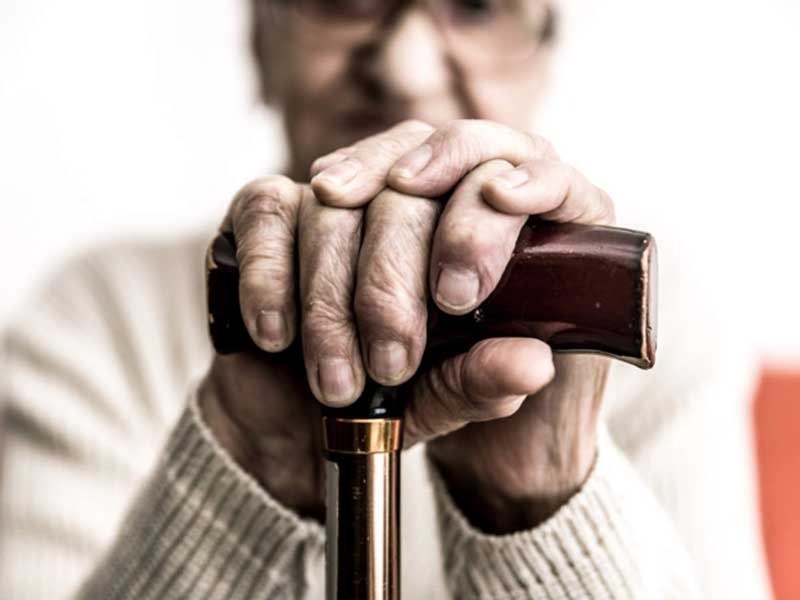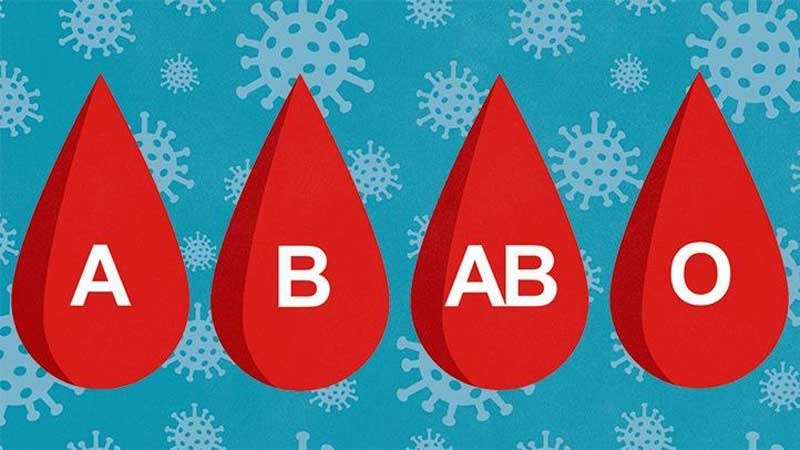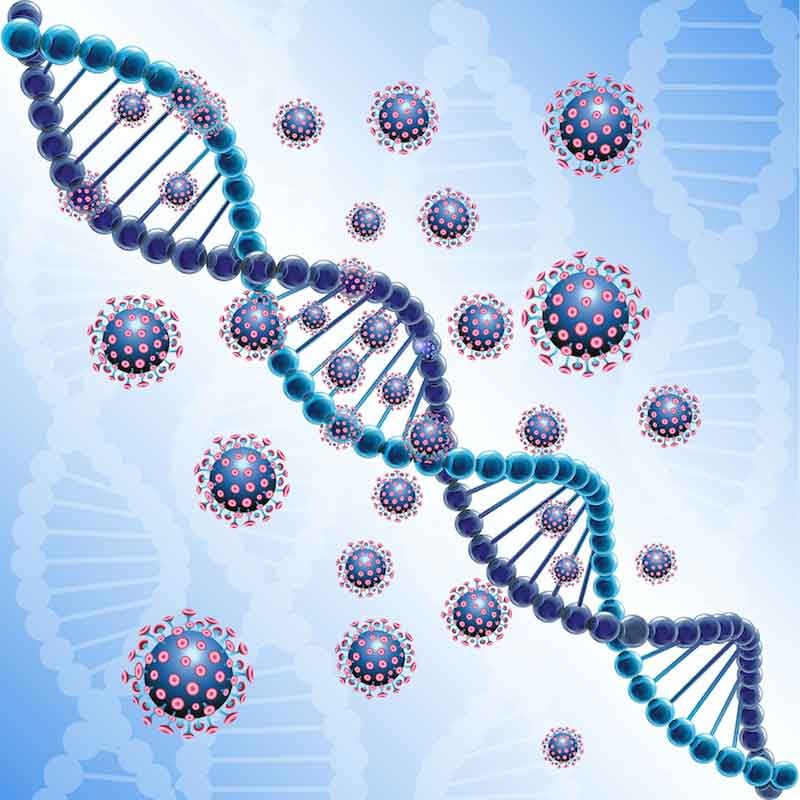COVID-19 kills some and spares others

The novel coronavirus causing COVID-19 seems to hit some people harder than others, with some people experiencing only mild symptoms and others being hospitalized and requiring ventilation. Though scientists at first thought age was the dominant factor, with young people avoiding the worst outcomes, new research has revealed a suite of features impacting disease severity. These influences could explain why some perfectly healthy 20-year-old with the disease is in dire straits, while an older 70-year-old dodges the need for critical interventions.
Underlying health conditions are thought to be an important factor in influencing disease severity. Indeed, a study of more than 1.3 million COVID-19 cases in the United States, published June 15 in the journal Morbidity and Mortality Weekly Report, found that rates of hospitalizations were six times higher and rates of death were 12 times higher among COVID-19 patients with underlying conditions, compared with patients without underlying conditions. The most commonly reported underlying conditions were heart disease, diabetes, and chronic lung disease.
In general, risk factors for more severe COVID-19 outcomes include:
- Age
- Diabetes (type 1 and type 2)
- Heart disease and hypertension
- Smoking
- Blood type
- Obesity
- Genetic factors
Age
About 8 out of 10 deaths associated with COVID-19 in the U.S. have occurred in adults ages 65 and older, according to the U.S. Centers for Disease Control and Prevention (CDC). The risk of dying from the infection, and the likelihood of requiring hospitalization or intensive medical care, increases significantly with age. For instance, adults ages 65-84 make up an estimated 4-11% of COVID-19 deaths in the U.S, while adults ages 85 and above make up 10-27%.
The trend may be due, in part, to the fact that many elderly people have chronic medical conditions, such as heart disease and diabetes, that can exacerbate the symptoms of COVID-19, according to the CDC. The ability of the immune system to fight off pathogens also declines with age, leaving elderly people vulnerable to severe viral infections, Stat News reported.
Diabetes
Diabetes mellitus — a group of diseases that result in harmful high blood sugar levels also seems to be linked to the risk of more severe COVID-19 infections.
The most common form in the U.S. is type 2 diabetes, which occurs when the body’s cells don’t respond to the hormone insulin. As a result, the sugar that would otherwise move from the bloodstream into cells to be used as energy just builds up in the bloodstream. (When the pancreas makes little to no insulin in the first place, the condition is called type 1 diabetes.)
In a review of 13 relevant studies, scientists found that people with diabetes were nearly 3.7 times more likely to have a critical case of COVID-19 or to die from the disease compared with COVID-19 patients without any underlying health conditions (including diabetes, hypertension, heart disease or respiratory disease), they reported online April 23 in the Journal of Infection.
Even so, scientists don’t know whether diabetes is directly increasing severity or whether other health conditions that seem to tag along with diabetes, including cardiovascular and kidney conditions, are to blame.
That fits with what researchers have seen with other infections and diabetes. For instance, flu and pneumonia are more common and more serious in older individuals with type 2 diabetes, scientists reported online April 9 in the journal Diabetes Research and Clinical Practice. In a literature search of relevant studies looking at the link between COVID-19 and diabetes, the authors of that paper found a few possible mechanisms to explain why a person with diabetes might fare worse when infected with COVID-19. These mechanisms include: “Chronic inflammation, increased coagulation activity, immune response impairment and potential direct pancreatic damage by SARS-CoV-2.”
Not all people with type 2 diabetes are at the same risk, though: A study published May 1 in the journal Cell Metabolism found that people with diabetes who keep their blood sugar levels in a tighter range were much less likely to have a severe disease course than those with more fluctuations in their blood sugar levels.
People with type 1 diabetes (T1D) are also at elevated risk of adverse outcomes, a small study published in Diabetes Care suggests. The study, coordinated by T1D Exchange — a nonprofit research organization focused on therapies for those with type 1 diabetes — found that of 64 people with either COVID-19 or COVID-19-like symptoms, two died. Nearly 4 in 10 people had to be treated in a hospital. And nearly a third experienced diabetic ketoacidosis — a potentially deadly condition in which the body experiences a shortage of insulin and blood sugar levels rise dangerously high. The average patient was about 21 years old, suggesting that risks could be potentially higher for older age groups.
Heart Diseases and Hypertension
People with conditions that affect the cardiovascular system, such as heart disease and hypertension, generally suffer worse complications from COVID-19 than those with no preexisting conditions, according to the American Heart Association. That said, historically healthy people can also suffer heart damage from the viral infection.
The first reported coronavirus death in the U.S., for instance, occurred when the virus somehow damaged a woman’s heart muscle, eventually causing it to burst, Live Science reported. The 57-year-old maintained good health and exercised regularly before becoming infected, and she reportedly had a healthy heart of “normal size and weight.” A study of COVID-19 patients in Wuhan, China, found that more than 1 in 5 patients developed heart damage — some of the sampled patients had existing heart conditions, and some did not.
Smoking
People who smoke cigarettes may be prone to severe COVID-19 infections, meaning they face a heightened risk of developing pneumonia, suffering organ damage, and requiring breathing support. A study of more than 1,000 patients in China, published in the New England Journal of Medicine, illustrates this trend: 12.3% of current smokers included in the study were admitted to an ICU, were placed on a ventilator, or died, as compared with 4.7% of nonsmokers.
A recent study, posted March 31 to the preprint database bioRxiv, proposed a more speculative explanation as to why COVID-19 hits smokers harder. The preliminary research has not yet been peer-reviewed, but early interpretations of the data suggest that smoke exposure increases the number of ACE2 receptors in the lungs — the receptor that SARS-CoV-2 plugs into to infect cells.
Many of the receptors appear on so-called goblet and club cells, which secrete a mucus-like fluid to protect respiratory tissues from pathogens, debris, and toxins. It’s well-established that these cells grow in number the longer a person smokes, but scientists don’t know whether the subsequent boost in ACE2 receptors directly translates to worse COVID-19 symptoms. What’s more, it’s unknown whether high ACE2 levels are relatively unique to smokers, or common among people with chronic lung conditions.
Obesity
Several early studies have suggested a link between obesity and more severe COVID-19 disease in people. One study, which analyzed a group of COVID-19 patients who were younger than the age of 60 in New York City, found that those who were obese were twice as likely as non-obese individuals to be hospitalized and were 1.8 times as likely to be admitted into critical care.
It’s not clear why obesity is linked to more hospitalizations and more severe COVID-19 disease, but there are several possibilities, the authors wrote in the study. Obesity is generally thought of as a risk factor for severe infection. For example, those who are obese had longer and more severe disease during the swine flu epidemic, the authors wrote. Obese patients might also have reduced lung capacity or increased inflammation in the body. A greater number of inflammatory molecules circulating in the body might cause harmful immune responses and lead to severe disease.
Blood type
Blood type seems to be a predictor of how susceptible a person is to contract SARS-CoV-2, though scientists haven’t found a link between blood type per se and severity of the disease.
In a recent study of blood type and COVID-19, published online April 11 to medRxiv, scientists looked at 1,559 people tested for SARS-CoV-2 at New York-Presbyterian hospital; of those, 682 tested positive. Individuals with A blood types (A-positive and A-negative) were 33% more likely to test positive than other blood types and both O-negative and O-positive blood types were less likely to test positive than other blood groups. (There’s a 95% chance that the increase in risk ranges from 7% to 67% more likely.) Though only 68 individuals with an AB blood type were included, the results showed this group was also less likely than others to test positive for COVID-19.
Why blood type might increase or decrease a person’s risk of getting SARS-CoV-2 is not known. A person’s blood type indicates what kind of certain antigens cover the surfaces of their blood cells; These antigens produce certain antibodies to help fight off a pathogen. Past research has suggested that at least in the SARS coronavirus (SARS-CoV), anti-A antibodies helped to inhibit the virus; that could be the same mechanism with SARS-CoV-2, helping blood group O individuals to keep out the virus, according to Zhao’s team.
Genetic factors
Many medical conditions can worsen the symptoms of COVID-19, but why do historically healthy people sometimes fall dangerously ill or die from the virus? Scientists suspect that certain genetic factors may leave some people especially susceptible to the disease, and many research groups aim to pinpoint exactly where those vulnerabilities lie in our genetic code.
In one scenario, the genes that instruct cells to build ACE2 receptors may differ between people who contract severe infections and those who hardly develop any symptoms at all, Science magazine reported. Alternatively, differences may lie in genes that help rally the immune system against invasive pathogens, according to a recent Live Science report.
For instance, a study published April 17 in the Journal of Virology suggests that specific combinations of human leukocyte antigen (HLA) genes, which train immune cells to recognize germs, may be protective against SARS-CoV-2, while other combinations leave the body open to attack. HLAs represent just one cog in our immune system machinery, though, so their relative influence over COVID-19 infection remains unclear. Additionally, the Journal of Virology study only used computer models to simulate HLA activity against the coronavirus; clinical and genetic data from COVID-19 patients would be needed to flesh out the role of HLAs in real-life immune responses.


